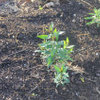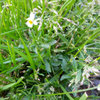Lime-like fruit
bracingwind
15 years ago
Related Stories

EDIBLE GARDENSGrow Plum Hybrids for Your Favorite Fruit Flavors
Plums are cozying up with apricots, peaches and even cherries — here’s how to grow these hybrids for the best aspects of each
Full Story
FARM YOUR YARDIf You Have Room for Only One Fruit Tree ...
Juice up a small garden with one of these easier-care or worth-the-effort fruit trees for a mild climate
Full Story
EDIBLE GARDENSHow to Grow 10 Favorite Fruit Trees at Home
Plant a mini orchard in fall, winter or early spring to enjoy fresh-off-the-tree fruit the following year
Full Story
FALL GARDENING5 Fall Fruits You Can Grow in Containers
Brighten your porch or patio with a potted pomegranate, kumquat, blueberry bush or another great fall fruit
Full Story
SHOP HOUZZShop Houzz: Juicy Fruit
Pick a bunch of tasty accessories inspired by fruits like apples, pears, bananas and pineapples
Full Story0

Fruit Displays Sweeten Summer Interiors
Eating the rainbow takes on a new meaning in these seasonally inspired fresh fruit accents
Full Story
MOST POPULARHow to Get Rid of Those Pesky Summer Fruit Flies
Learn what fruit flies are, how to prevent them and how to get rid of them in your home
Full Story
GARDENING GUIDESGreat Design Plant: Grow Blueberries for Their Fruit and More
Eastern gardeners should consider growing blueberry plants for their delicious fruits, bee-friendly spring blooms and brilliant fall foliage
Full Story
GARDENING AND LANDSCAPINGCrazy for Fruit Trees
Whether a single citrus or a mini apple orchard, even the smallest landscape space can bear deliriously delicious fruit
Full StoryMore Discussions












Iris GW
bracingwindOriginal Author
Related Professionals
Maple Valley Landscape Architects & Landscape Designers · Horsham Landscape Architects & Landscape Designers · Wareham Landscape Architects & Landscape Designers · Matthews Landscape Contractors · Deer Park Landscape Contractors · Hampton Bays Landscape Contractors · Kaneohe Landscape Contractors · Mason Landscape Contractors · Merced Landscape Contractors · The Woodlands Landscape Contractors · View Park-Windsor Hills Landscape Contractors · Selma Landscape Contractors · San Pablo Landscape Contractors · Clearfield Landscape Contractors · Tysons Corner Stone, Pavers & ConcreteIris GW
weedwoman
bracingwindOriginal Author
erict
bracingwindOriginal Author
weedwoman
perlite
bracingwindOriginal Author
Iris GW
weedwoman
Casia